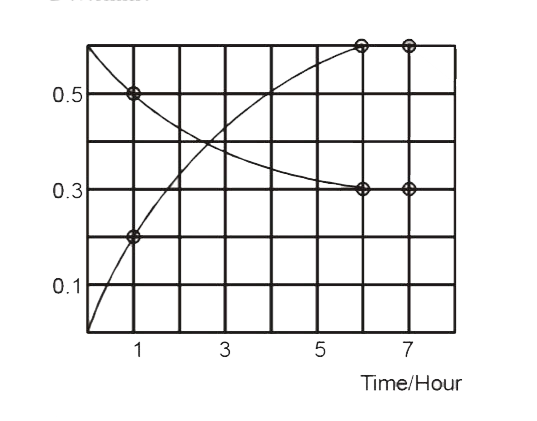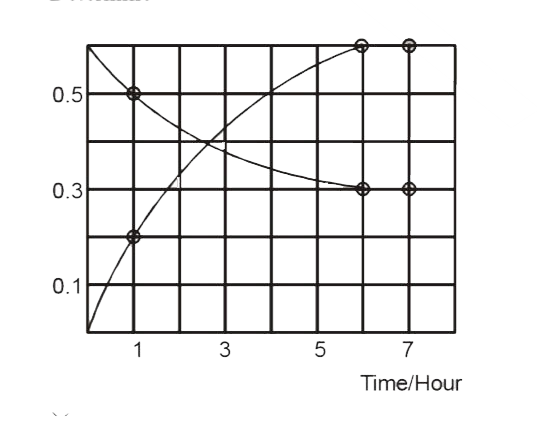The progress of the reaction A⇔nB with time, is presented in figure. Determine
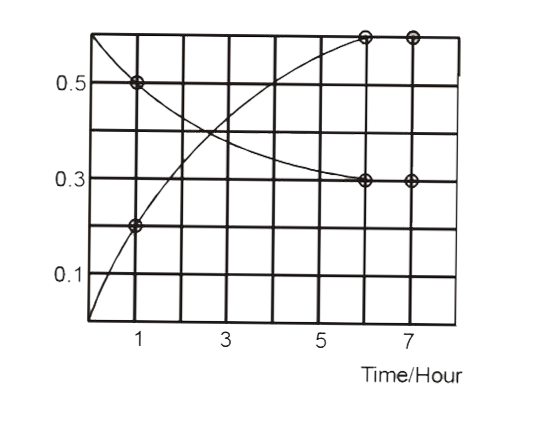
the equilibrium constant K.
The correct Answer is:1.2 mol/L
Step by step video, text & image solution for The progress of the reaction AhArrnB with time, is presented in figure. Determine the equilibrium constant K. by Chemistry experts to help you in doubts & scoring excellent marks in Class 12 exams.
Updated on:21/07/2023Topper's Solved these Questions
- CHEMICAL EQUILIBRIUMBOOK - MOTIONCHAPTER - CHEMICAL EQUILIBRIUMEXERCISE - Exercise - 4
20 Videos
- CHEMICAL EQUILIBRIUMBOOK - MOTIONCHAPTER - CHEMICAL EQUILIBRIUMEXERCISE - Exercise - 2
99 Videos
- CHEMICAL BONDING BOOK - MOTIONCHAPTER - CHEMICAL BONDING EXERCISE - EXERCISE -4 LEVEL-II
40 Videos
- Chemical KineticsBOOK - MOTIONCHAPTER - Chemical KineticsEXERCISE - Exercise - 4 (Level - II) (SUBJECTIVE PROBLEM)
1 Video
Similar Questions
Knowledge Check
For a system in equilibrium, the rate constant for the forward reaction is represented by Kf and the rate constant for the reverse reaction is represented by Kr.Which equation represents the equilibrium constant for this reaction in the forward direction ?
AKeq=Kf.KrBKeq=KfKrCKeq=KrKfDKeq=1Kf.KrFor a reversible exothermic reaction , which is the effect of increasing temperature on the equilibrium constant (keq) and on the forward rate constant (kf)?
AKeq and kf both increaseBKeq and kf both DecreaseCKeq increase and kf decreaseDKeq decrease and Kf increasesIn an equilibrium reaction for which ΔG∘=0 , the equilibrium constant K =
A0B1C2D10
The progress of the reaction A⇔nB, with times is presented in the figure below.
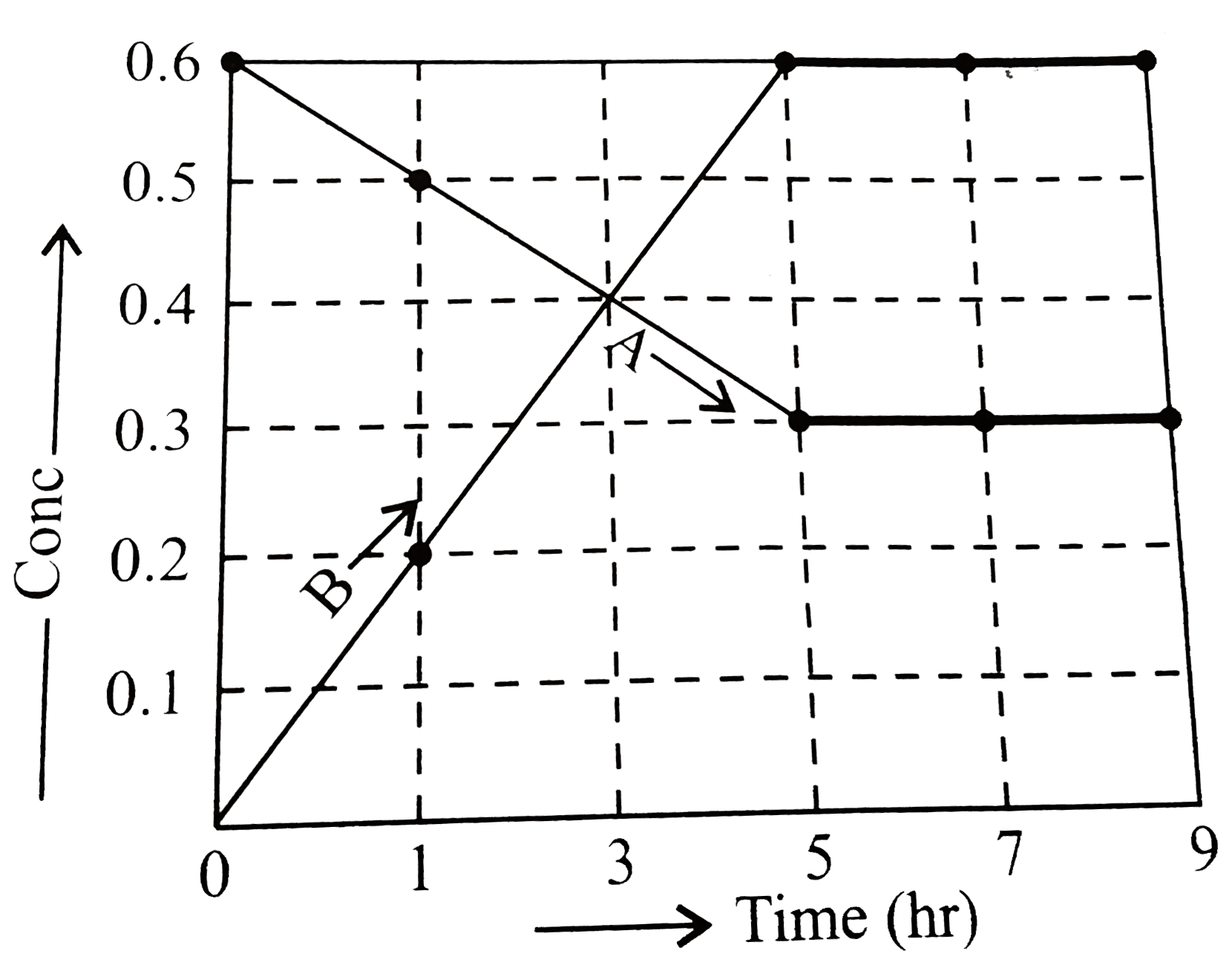
Determine:
(a) The value of n , (b) Keq
( c) Initial rate of converison of A
View SolutionThe progress of the reaction A⇔nB , with time is presented in the figure. Determine (i) the value of n (ii) the equilibrium constant K (iii) the initial rate of conversion of A
View SolutionThe progress of the reaction, A ⇌ nB with time, is presented in figure given below. Determine.
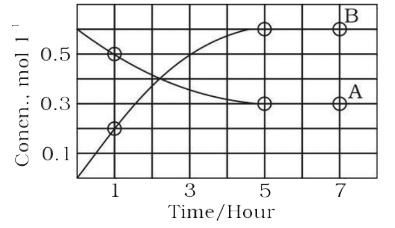
(i) The value of n,
(ii) The equilibrium constant K, and
(iii) the initial rate of conversion of A.
View SolutionThe progress of the reaction A⇔nB with time is persented in the figure given below:

Determine
a. The value of n.
b. The equilibrium constant K.
c. The initial rate of concentration of A.
View SolutionIn an equilibrium reaction for which ΔG=0, the equlibrium constant K =
View Solution

